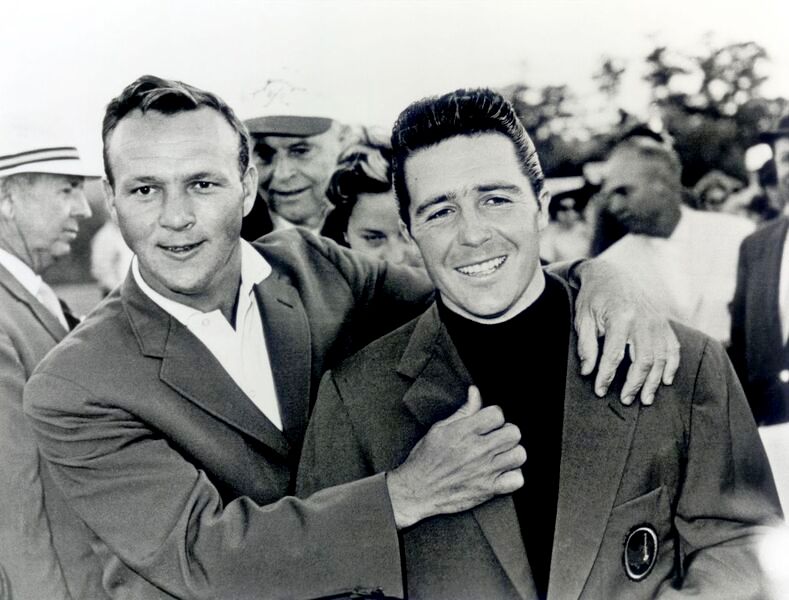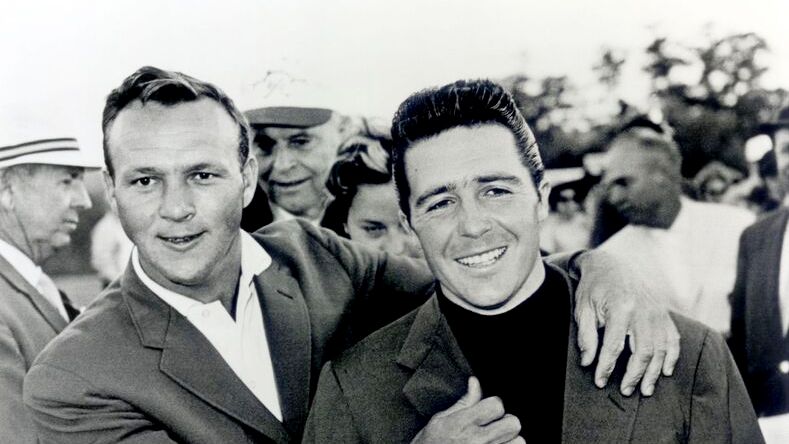
Estimated reading time: 6 minutes
In tennis, players can avail themselves of a second serve. In baseball, when the batter hits a ball in foul territory, they don’t have to play it. For those playing golf there’s no second serve and foul balls hit have to be played wherever they land.
Golfers understand the term “mulligan.” It refers to an errant shot played and then a golfer able to take a “do over” as if the first one played never happened. Such a situation is obviously not permitted in recognized competitions.
Through the years the most celebrated of golf shots at the annual Masters tournament have been the ones propelling players into a green jacket. Who can forget the 38-foot birdie putt by Jack Nicklaus in 1975 at the 16th green in holding off rivals Tom Weiskopf and Johnny Miller? Or, the remarkable chip in at the same hole by Tiger Woods in winning the ’05 Masters.
But the flipside is often forgotten by the broader masses. An inexplicable shot — or turn of events — that denied a player the gateway to a green jacket. The Masters has had a fascinating array of different situations that have happened over the years. The ones listed below are among central moments of time where a contestant would dearly have wished to have had a personal “muligan” to possibly change a past outcome with a new storyline forever sealed in the history books.
***
“If the Masters offered no money at all, I would be here trying just as hard.”
— PGA TOUR (@PGATOUR) April 3, 2017
— Ben Hogan pic.twitter.com/n3SFUuDRrY
1946 Masters – Hogan’s Hiccup
What many people have forgotten is how long a period of time it took for Ben Hogan to achieve the stardom he eventually accomplished. With the resumption of the Masters following World War II, Hogan was in search of his first green jacket and major triumph.
Trailing 3rd round leader Herman Keiser by five strokes, Hogan made up the difference and after Keiser had three-putted the final hole all that stood between Ben and Masters glory was making par on the final hole. Hogan reached the green in two shots and had 15 feet for the win on the slick putting surface. Dropping the putt would mean a victory — even two-putting would snare an 18-hole playoff the next day.
Hogan three-putted and left the green with nothing to show for his efforts.
Lesser players would have crumbled from the inexplicable mishap. In August of that same year Ben would win his first major title — the PGA Championship and the road to stardom for the 34-year-old was set in motion. In the years to come — Hogan would claim two green jackets. Ben’s failure at the 1946 Masters simply intensified his future efforts resulting in the near mythic reverence his name commands in the sport to this very day.
***
1954 Masters — Go Billy Joe Go !
The history books frame the 1954 Masters as an epic playoff between the two greatest players of that time — Ben Hogan and Sam Snead. Often missed is how near Billy Joe Patton came to being the first amateur to win the green jacket.
Patton led by one with Hogan and Snead in contention when reaching the par-5 13th. Opting to go for the green in two shots by an enthusiastic gallery — Patton’s ball ended up in the creek fronting green and eventually scored a double-bogey 7.
If Patton had taken a more conservative line of play the outcome could just as easily have meant a victory. Complicating matters, Patton opted to go for the green at the 15th and the net result was a watery grave and bogey score. In hindsight, if the 31-year-old North Carolina native played even par from the 13th to the 18th– he would have beaten the two goliaths by a stroke.
***
1961 Masters — Arnie’s Anguish
There’s an old sports adage that no competition is over — until it’s truly over. Arnold Palmer had won the 1958 and 1960 Masters with rousing final round play in both instances. As he stood on the 18th tee for the final round of the 1961 event – a closing par would have given Palmer a successful defense of his title — the first in Masters history.
After splitting the fairway with his drive — Palmer made the walk up the hill at the 18th and spotted an old friend, golf club manufacturer, George Low, who waved him over to the ropes to congratulate Arnie on his about to happen victory. Palmer acknowledged the praise without realizing the event had not concluded.
Palmer than bunkered his approach — from a bad lie in the bunker hit his 3rd shot long over the far side of the 18th green. His 4th shot did not fare well leaving him a 15-footer simply to tie. Arnie missed the putt and instead of the Masters having its first champion defend his title — the event went to Gary Player — the first international player to claim a green jacket.
Adding to Palmer’s woes — as defending champion he was the one who placed the green jacket on Player’s shoulders. In the years to follow — Arnie would always cite the 1961 Masters as a moment he always regretted. If Palmer had simply kept his focus and ignored the well-wishes one can only imagine how his sterling career could have been elevated even higher.
***
1968 Masters — “What a stupid I am “
*Roberto De Vincenzo and Bob Goalby tied for the lead after 72 holes in the 1968 Masters. Unbeknownst to De Vincenzo, his marker Tommy Aaron penciled in a four at the 17th hole when Roberto actually made a birdie three. By strict application of the rules the higher number had to stand — preventing the two golfers from engaging in an 18-hole playoff Monday.
De Vincenzo characterized his error simply by saying, “What a stupid I am.” For Goalby the win was unfairly tainted by a bookkeeping error. For the Argentinian, to add insult to injury — the situation unfolded on his 45th birthday. How regrettable that in spite of his golf club prowess his major weakness came in failing to review carefully what had actually happened. A score correction could easily have meant a far different ending.
After that episode, the Masters opted to have players gather in a scorer’s area — away from the crowds so player could more fully review their scorecard. Too late for two men impacted in different but far-reaching ways.
***
1975 Masters — Weiskopf’s Woes
*The 1975 Masters provided a scintillating three-way drama between Jack Nicklaus, Johnny Miller and Tom Weiskopf. The three best players in the world at that time were locked in a battle royale over the final round, much is quite rightly made of the 38-foot putt Nicklaus holed at the par-3 16th to vault into a tie for the lead with Weiskopf.
What many people remember about the 1975 event was how both Miller and Weiskopf missed tying putts at the 18th hole to force a playoff with Nicklaus — Miller missing from 22-feet and Weiskopf from 8 feet.
The element few people ever recall was what Weiskopf did at the par-3 16th after watching Nicklaus hole his incredible birdie putt. His fellow-Ohioan hit a lackluster approach leaving him nearly 80 feet to to the hole. Three putts later and the momentum Weiskopf had built after birdieing the par-5 15th was gone.
Yes, a clear argument can be made Tom would have relished a mulligan either for the birdie putt at the 18th or the approach he so poorly played at the 16th. Never again would the talented Weiskopf — a four-time runner-up — come that close again for a green jacket that seemed destined for his broad shoulders.
